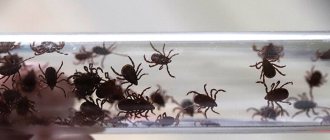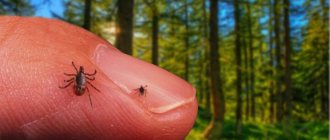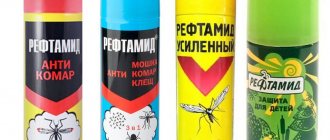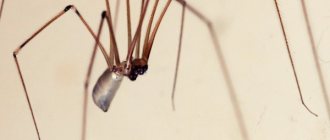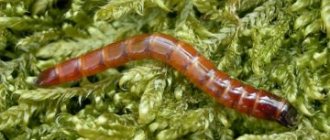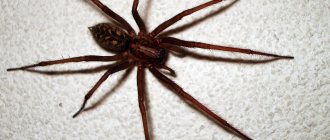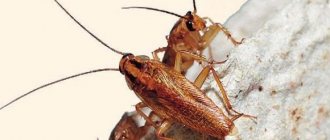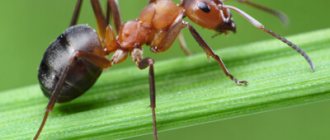With the arrival of warmer weather, people increasingly take walks through forest parks, sit with fishing rods on the shores of lakes among reeds and tall grass, pick flowers in grassy meadows, and harvest medicinal herbs in forests and groves. Many of them know that the end of spring and beginning of summer is the time of greatest activity for a variety of insects, including ticks. At this time, people know about 54 thousand species of ticks. So, how can you protect yourself from ticks in nature?
The harmfulness of ticks to animals, birds and people has been known for a long time. Since then, there has been a continuous struggle with them. In the time of Aristotle, ticks parasitizing dogs were fought with the help of sulfur. The Chinese physician Chao Yuan Fang (550-630 AD) treated scabies on the basis that it was caused by small, invisible mites that parasitized the human body.
What types of mites are there?
Not all members of the tick group are dangerous to people and pets. But still, scientists count 25 species of ticks that you need to watch out for. Indeed, in addition to causing obvious harm, ticks carry various infectious and parasitic (infections with worms and similar organisms) diseases.
How to protect yourself from ticks in nature. The mites that humans have to deal with can be both blood-sucking parasites and saprophagous mites, which do not live on a living creature, but live in the soil and feed on plant sap. Varieties of saprophages have adapted to certain food products - these are cheese, granary, and flour mites. Many mites live in places where dust accumulates in residential buildings along with people. These are dust or bed mites, the nutritional base of which is dead cells of the human epidermis, the pile of woolen blankets, carpets, blankets, and furniture upholstery.
Tick habitats
In Russia, ticks live in the forest climatic zone. Ticks are widespread in the northern and central countries of Western Europe and northern China. The habitats of ticks are areas of land covered with grass and low shrubs. These can be the edges of deciduous forests, meadows, clearings, shores of lakes and rivers, sunlit slopes. In coniferous forests, ticks prefer to settle in rubble of dry branches and litter. In places where there are no thickets of grass, there are practically no ticks.
How to protect yourself from ticks in nature. In populated areas where the grass on the roadsides is not mowed and there are piles of leaves and branches, it is easy to suffer from tick bites. On unmown lawns in cities, children and pets can become victims of blood-sucking ticks. Ticks need plant debris; they live in grass and climb it to a height of 1.5 m. The main concentration of ticks is in areas along roads and paths.
How to make your vacation outside the city safe?
If, with the arrival of stable warmth, you are going to leave the city and move to the dacha for some time, then it must be secured. How to do it? It's quite simple:
- first of all, we clear the territory, removing all bushes, thickets of grass and piles of last year’s leaves;
- We regularly mow the lawn - it’s too hot for ticks in short grass, and therefore they will immediately leave it;
- we keep the patio with a veranda and playground clean, from time to time cutting off newly grown shoots of bushes and other dense vegetation
We really hope that these recommendations will help you make your outdoor recreation as safe as possible and protect you from attacks by harmful ticks.
Why is a tick dangerous?
How to protect yourself from ticks in nature. Dust mites do not feed on human blood, but can cause allergies in people. This may be a reaction of the human body to the waste products of these insects, to their bites, to the chitinous shell of dead ticks. Among the blood-sucking ticks, the most dangerous are:
- Ixodid ticks are those that live in forests and are the main carriers of encephalitis.
- Argasid mites - living in caves, grottoes, cracks in stones, sometimes they live near a person in a barn or other fairly warm room; attack mammals at night and can become a source of tick-borne relapsing fever.
- Gamasid mites - feed on the blood of reptiles, birds, and mammals (including domestic ones).
- Mouse mites - It is they, parasitizing on rodents, that can transmit the causative agent of smallpox rickettsiosis to humans.
- Armored mites are intermediate hosts of tapeworms. They live in grass litter. Herbivores (sheep, goats) swallow ticks and helminth larvae inside them along with the grass.
- Scabies mites - they gnaw passages in the skin layer and lay eggs; they parasitize mammals.
Read also the article: “Should children be vaccinated?”
How to properly protect yourself from ticks in nature
How to properly remove a tick with tweezers
When planning a trip to the forest, lake, village in the summer, or going for a walk in a forested area, you should make sure that all measures have been taken to protect against ticks. First of all, you need to take repellents and tick removal equipment with you. These could be ordinary tweezers.
Safe clothing
Proper clothing for the forest
How to protect yourself from ticks in nature. The main protective factor for people will be their clothing. The cut of clothing should be such that there are no parts of the body that are too exposed. Shirts and dresses should have long sleeves, narrow or with buttoned cuffs. Collars should be straight and tight-fitting. The clothing set should include long trousers with elastic at the bottom edge of the legs. It is necessary to have a headdress covering the neck area, closed shoes, and thick socks.
Rules: how to dress for nature
Simple folk remedies
Before traveling, a person’s clothing and body are treated with protective drugs that can destroy or repel ticks. An important element of such products is the smell of the substances included in their composition. Almost all folk remedies for ticks are made on the basis of alcohol or vinegar with the addition of either birch tar, or vanillin, or some essential oils and sharp-smelling plants. Liquid formulations are prepared, which are then applied to the body and clothing using sprayers.
Essential oils and vinegar repel insects
Garlic spray against ticks
Garlic spray is prepared from 100 grams of alcohol-containing liquid and 5-7 cloves of peeled garlic. Garlic is grated or chopped in a blender. The pulp is combined with vodka or alcohol. The composition is allowed to brew for 12 hours. The mixture is filtered and thoroughly filtered. Apply to clothing with a spray bottle.
Vodka with vanilla against ticks
A similar product is obtained by mixing vanilla powder with vodka. For 150 g of liquid take 3 g of vanillin. The mixture is kept in a cool, dark place for a week. This product can be applied not only to clothing, but also to open areas of the body. Before use, you need to make sure that people who plan to use it are not allergic to the smell of vanilla.
Essential oils that repel ticks
You can add essential oils to ready-made body care gels, the smell of which repels ticks. Such essential oils include geranium, peppermint, eucalyptus, and lavender. The product may contain 50 g of aloe vera gel, 10 drops of geranium and lavender oil, 150 g of vegetable oil. The mixture is shaken well and used for application to the skin of the face, hands and other areas of the body.
The oils in any cream can be easily rubbed into the baby’s skin.
The aroma of the “Zvezdochka” balm has always been distinguished by its brightness and strength. A few drops of balm are added to 10 ml of liquid soap, mixed with 50 ml of apple cider vinegar and 200 ml of cold boiled water. All components are thoroughly mixed and used for application to the body. You can apply a composition based on cologne with the scent of cloves and a few drops of pharmaceutical tincture of valerian root to your clothes.
Anti-tick medications
Ready-made industrial anti-tick products are divided into 3 types based on their mode of action: those that simply repel insects - repellents, those that kill them - acaricides, and those that repel them and completely paralyze ticks - universal. All of them are used only for application to clothing. Before traveling to places where ticks may be present, it is necessary to check the effect of the odors of these products on a person and make sure that there is no individual intolerance to them.
Anti-tick aerosols “Picnic BIO Active”, “Picnic Extreme”, “Taiga”, “OFF Extreme” are popular. UltraThon lotion with applicator provides long-term protection against ticks, midges and mosquitoes. It is applied to the skin. This product was developed in the USA.
Do dogs get tick-borne infections?
Unfortunately, they get sick. Running through the forest, dogs easily pick up ticks on their fur, and after an hour or an hour and a half, the tick can become embedded. The incubation period in dogs, just like in humans, depends on the virulence of the virus, the dog’s immunity, etc.
Symptoms of the disease develop depending on the severity of the disease. In severe cases, symptoms develop within 12-24 hours, in mild cases - after a few days. The dog experiences fever, lethargy, apathy, and complete refusal to eat. Symptoms that should alert owners are a wobbly gait, weakness in the front legs, even loss of balance. A terrible sign is when the urine turns brown, vomiting, and frequent stools interspersed with blood appear. Do not tempt fate; if such signs are present, the dog should be taken to the veterinarian as soon as possible.
How to protect dogs from ticks
It is best to predict tick bites in dogs in advance. Therefore, take preventive measures in a timely manner.
- During the period of greatest tick activity, the animal needs to wear an anti-tick collar;
- Get vaccinated to develop immunity against tick-borne infections;
- Treat the animal with repellents;
- After each walk in the forest, carefully inspect the animal’s fur in order to remove insects in time and destroy them.
As folk remedies that are safe for the animal, it is good to use drops of essential oils that are applied to the withers. And washing with tar soap will not only help repel ticks and fleas, but will also heal wounds and relieve irritation and itching.
How to protect yourself from ticks outdoors in the forest
When choosing clothes for forest walks, you must choose mosquito and anti-encephalitis clothing. guarantee 100% protection against tick attacks, the “Taiga” suit does not restrict movement, but at the same time fits the figure very tightly, the “Bodyguard” suit can be worn all year round, as it has a mesh structure and can warm the human body. A mosquito net on the head will be an additional means of protecting a person from tick bites.
Safe clothing
The top layer of clothing represents a mechanical barrier to the ixodid tick. A checklist that will help you check how much your suit protects against tick bites:
- Clothes should be made of smooth fabric. We recommend suits made of cotton, linen and other natural and breathable materials. Synthetics (polyester and its analogues, membrane) glide and prevent parasites from crawling. The body under a layer of polyester does not breathe, and a membrane jacket has additional valves that can become a place for ticks to penetrate under clothing.
- To make the insect immediately noticeable on clothing, choose light-colored fabric. A spotted uniform in this regard is not the most advantageous option: among the multi-colored spots, a two-millimeter bloodsucker can easily get lost.
- If your trouser legs have a drawstring at the bottom, when going out for a walk you must pull it all the way down. If the legs do not fit at the ankles and do not have adjustable cuffs, they should be tucked into boots or boots. You can pull socks over your trouser legs. This is not a formal option, but it is suitable for safety during a walk in the forest.
- The head must be protected with a tight-fitting cap and hood;
- The sleeves and collar should have adjustable cuffs with the ability to tighten the fabric as much as possible.
- Shoes must be closed and have a minimum number of decorative elements. The ideal option is high rubber boots.
- Choose jackets and overalls with a zipper, without buttons or other fasteners with holes. Insects are able to quietly enter the victim's body through button holes.
Ticks tend to move along the human body from bottom to top. Make sure that the parasite cannot get under your pant leg or under the elastic of your sock. If you often and for a long time visit places where the likelihood of encountering ticks is high, it is worth purchasing a special anti-encephalitis suit. Its fabric is dense enough that a bloodsucker cannot bite through it, and its loose cut ensures comfortable walking for a long time. It is additionally treated in production with anti-tick agents, which also increases the effectiveness of the use of overalls and “encephalitis jackets”.
After your walk, do not forget to follow simple steps that will protect you from close contact with a tick and help you find the bloodsucker if it has already bitten you:
- Remove all clothing and shake out onto a white sheet. If ticks are found, the insects must be destroyed.
- Comb the hair on your head with a fine-tooth comb. This should be done over the sink or over the same sheet in order to immediately destroy the enemy;
- Inspect the body, paying special attention to the armpits, areas under the knees, groin area, and head.
If you choose the right suit and follow simple recommendations, you won’t be afraid of ticks. Even if the parasite has bitten you, it will be quickly found. All that remains is to remove it correctly and eliminate the possibility of infection with tick-borne encephalitis.
How to protect children from ticks
Children should not only wear tight-fitting, light-colored clothing and a hat covered with slippery fabric, but also undergo frequent inspection of exposed areas of the body. To treat children's clothing, the drug "Defi-Taiga" is used, the product "Bebideta" is used for application to the skin. Test treatment of children's skin must be carried out several days before the planned trip to the forest. In the forest, it is necessary to monitor the child’s behavior, do not allow him to pick flowering plants, walk among the grass, sit or lie down on open areas of the ground.
How does infection occur?
One thing needs to be taken into account. The tick does not attach itself immediately. Having attacked a person, it crawls over clothes for some time and looks for a place where it could get on the person’s skin. Once on the skin, the insect also does not immediately attach itself, but looks for the most convenient places for suction. This can be the skin of the armpits, thighs, genitals, on the head, neck, behind the ears, that is, places with the thinnest and most delicate skin.
The person does not feel the moment of suction, since the bite injects an anesthetic substance along with saliva. Sometimes, after sucking blood, the tick disappears on its own. Only sometimes there is soreness and redness in this place.
However, not every tick can be a source of infection. Externally, it is impossible to distinguish an infected insect from a non-infected one. Therefore, if you notice ticks in your area, be sure to take measures to combat them. Especially if your summer cottage is located next to a forest.
How to protect a pregnant woman from ticks
Clothing for a pregnant woman must be selected from a series of mosquito suits. If it is not there, then the shirt should be tucked into trousers, the ends of the trousers into socks and shoes with high tops. The neck should be covered with a high collar and scarf, and the sleeves should end with a thick cuff or elastic band. To repel insects, it is better to use folk remedies with strong odors. Toxic substances are used only for treating the lower parts of clothing.
Read also the article: “How to strengthen a child’s immunity”
What should I do if bitten by a tick
Infectious disease experts advise that after a tick is discovered, do not panic and remove it as soon as possible. The likelihood of contracting an infection carried by a tick is low if the tick has been in the body for less than a day. If 2 to 3 days have passed, the likelihood of getting sick increases. Do not fill the tick body with gasoline or oil. Do not squeeze or puncture the tick to prevent the release of biological fluids that may contain infections and parasites.
Providing first aid for a tick bite
How to protect yourself from ticks in nature. The tick is removed with tweezers, and the person who will do this should wear gloves on their hands (preferably!). The insect is grabbed as close as possible to the place where it penetrates the skin and pulled out using vertical rocking movements. After removing the tick, there will be a wound that needs to be treated with an antiseptic. The area of the body around the bite site is also disinfected. The person performing the operation must wash and disinfect the instrument used to remove the tick and their hands.
After this, you need to go to a medical facility, where the victim is given antibiotic injections to prevent Lyme disease. This requires a doctor's prescription.
Read an interesting article about how to prepare healthy and tasty sandwiches to take with you on the road. You can find useful information HERE
Body examination
A complete examination of the body is necessary because it is often quite difficult to notice a tick bite. And especially when you arrive on the move. And if you are still wearing the right clothes, then sweating occurs, which often causes a slight itching that provokes scratching. As a result, panic grows, which forces you to probe the disturbed area every minute. It is very easy to recognize a tick with your fingers, despite its small size. But even if you haven’t found anyone, it’s still necessary to conduct an inspection.
So, having got out of a potentially dangerous area, you should take off your jacket and, moving away from your company and other people, shake it out thoroughly. If you were walking with elderly people, you need to help them by carefully removing your jacket from the back. Now we examine the clothing and body, especially the collar area, neck and back.
If the path is long and you often have to make your way through thickets, then it is advisable to inspect the area of contact after each contact with vegetation, and do a general inspection several times during the entire journey - approximately every quarter of an hour.
On a note! The tick will not crawl on your body for hours. Usually it penetrates after about five minutes, and sometimes immediately as soon as it finds an open area of skin! Therefore, when making your way through the bushes, it is advisable to reduce the interval between inspections!
Upon arrival home, the inspection must be repeated, especially since now it will be as complete as possible. First, we take a shower - it will allow us to wash off ticks from the body that may not have yet had time to attach themselves, and then we proceed to the inspection. If you check for ticks on yourself, then using a mirror will make it much easier and more convenient for you. Inspect the neck, shoulders, ears and behind them, ankles, waist, area under the knees and armpits. In this situation, special attention should be paid to areas where there are skin folds.
Infection with tick-borne encephalitis through goat milk
Infection with tick-borne encephalitis through goat's milk. If an animal has been bitten by a tick, it begins to develop fever, convulsions, and paralysis. After the symptoms cease to appear and the animal begins to recover, it is not always the owners of the animals who ask for a milk test for the presence of the pathogen. The encephalitis virus enters the human body through consumption of raw milk and takes hold in cells and tissues. Then it penetrates the blood and multiplies in leukocytes and blood vessels. After some time, it penetrates into the internal organs and affects the central nervous system.
The pathogen can be destroyed by boiling milk for a long time. At a temperature of 60°Son dies within 20 minutes. To avoid getting infected with goat encephalitis, it is better to drink pasteurized milk.
